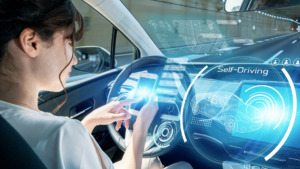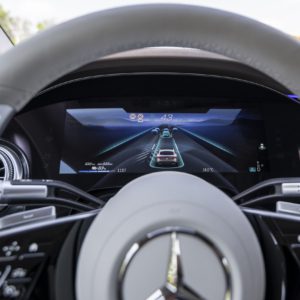- The monitoring task of driving is changing. Systems move from assistive to conditionally and fully un-supervised
- New launches of Level 3-Conditional automation from Honda, BMW, Mercedes-Benz and other carmakers, will allow the transfer of vehicle control from the driver to the system and vice-versa;
- Sensor redundancy for accurate perception of the vehicle’s surroundings, safe “handover” of vehicle control and liability when accidents occur, are the key challenges the new era of un-supervised driving faces;
- Requirements for Data Storage, sensor redundancy and HMI will become critical for liability claims in SAE Level 3 and user experience;
- Global harmonization of regulation will help avoid abuse and/or misuse of Level 3 systems

Auto2x’s report Regulatory Roadmaps to Level 3 – 4 Autonomous Driving, Automotive Cyber Security, V2X & AI, analyzes the challenges the automotive industry faces and provides recommendations for regulatory compliance, consumer education and innovation.
The automotive industry is transitioning from Supervised (SAE Level 0-2 or ADAS) to Unsupervised driving (Level 4-5), which sparks a debate about the need and benefit of an intermediate level (SAE Level 3)”, says Auto2X
Before we explain the challenges, let’s get explain the basic terminology.
Can you speak the Language of Automated Driving?
Definitions of Autonomous Driving are not consistent across the world and the capabilities of vehicles are not clearly defined, which can lead to consumer confusion and system misuse or abuse, says Auto2x
Admissibility of automated driving functions depends on the driving and monitoring tasks, i.e. driver engagement, which can be derived by (or inferred by) the level of vehicle automation (SAE J3016 or BASt).
Level 0: No Driving Automation
Level 1: Driver Assistance
Level 2: Partial Driving Automation
Level 3: Conditional Driving Automation
Level 4: High Driving Automation
Level 5: Full Driving Automation
ADAS (SAE Level 0-2) are assistive and hands-on the wheel is always required.
The problem arises from the fact that vehicle regulation and national traffic laws have been developed with the driver in mind, i.e., driver in control. The transition from a driver-centric regulation to Automated Driving systems is ongoing.
Despite the fact that some driver assistance systems are quite prevalent in major car markets – such as Autonomous Emergency Braking, Lane Departure Warning and rear-view vision because of the safety regulation and competition – consumers seem to still be confused about the limitations of the systems and their responsibilities when these features are active.
The focus of regulation has been on the amendment of Regulation No.79 to unlock Level 3-Conditional automation), where the system can monitor but drivers have to take over in case of an emergency, which is safe and adds value to owners.
The difference between L3 and L4 is that in the latter the driver does not need to intervene in case of emergency-only when the AD route ends.

The challenges with Level 3: Safe handover of control, redundancy and liability
Carmakers are taking different approaches to commercializing fully automated driving amid the engineering, regulatory and consumer adoption hurdles.
Most carmakers are introducing additional features one step at a time to progress from Level 2 to L3 and L3 to L4 respectively. Others have decided to skip Level 3 entirely.
The approval of L3 automation will allow greater utilisation of the time spent inside the car. As a result, new business models arise to monetise the new opportunities in automotive insurance, such as Pay-As-You-Drive insurance, and in-vehicle infotainment, e.g., video-on-demand.
However, the commercialisation of L3 is uncertain given the high cost/benefit ratio, i.e., the marginal impact on safety and driver convenience from L2 compared to the massive engineering challenge. Hence, carmakers are taking different approaches to reach L4 in an attempt to gain a competitive advantage and reshape profitability.
What is more, L4/fully-automated vehicles will revolutionise transportation and mobility leading to what we call Intelligent Mobility. This includes the rising car-sharing and ride-sharing businesses as well as new vehicle ownership models in the Passenger Car market.
Who is liable for a crash when Level 3-Automated Driving is in “Active Mode”?
Level 3-Autonomous Driving presents a challenge to traditional vehicle insurance due to its implications for the determination of liability.
Requirements for Data Storage will become critical for liability claims in Level 3-Automated Driving, says Auto2x
In Level 3, the transfer of vehicle control from the driver to the Automated Driving System has implications for the determination of liability since the driver is still the ultimate backup. This also creates insurance challenges for higher levels of automation.
More specifically, since the Liability framework for Level 3 is still largely unconfirmed, insurance tools are not in place for this level of automation. This challenges the development of Level 2-Autonomous Driving and Level 3 features by manufacturers.
However, carmakers, including Audi and Volvo have claimed that they will be accountable for potential failures when their ADS are active.
The ALKS regulation mandates vehicles to be equipped with a Data Storage System for Automated Driving — aka a “black box” — which will record when ALKS is activated. Car manufacturers must also introduce Driver Availability Recognition Systems, which monitor seatbelt use and monitor the driver’s capability to take back control of the vehicle, including through spotting eye blinking and closure.
We see the need for adequate education of drivers, from both carmakers as well as rating associations such as the NCAP to help them understand their legal requirements and avoid consumer confusion over driver responsibilities or even misuse resulting from “mode confusion”.
To learn more contact us at info@auto2xtech.com


